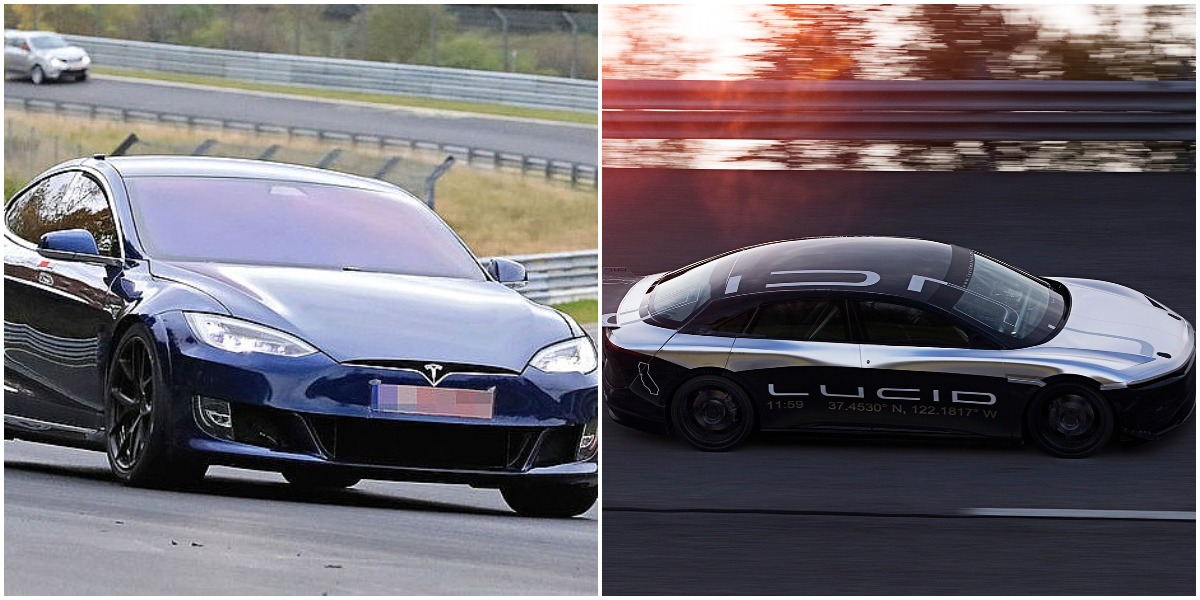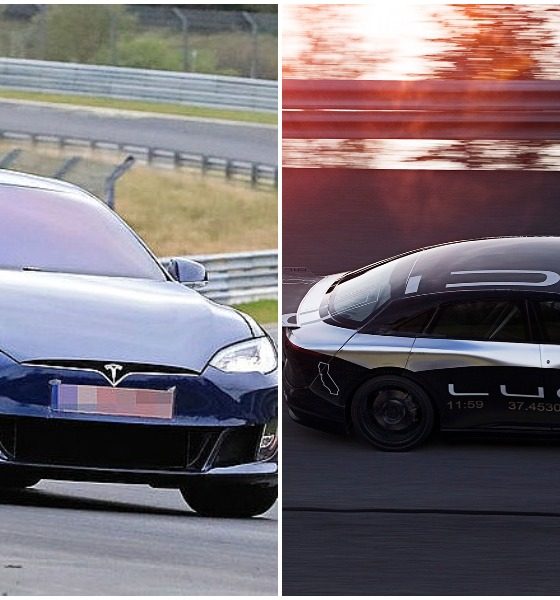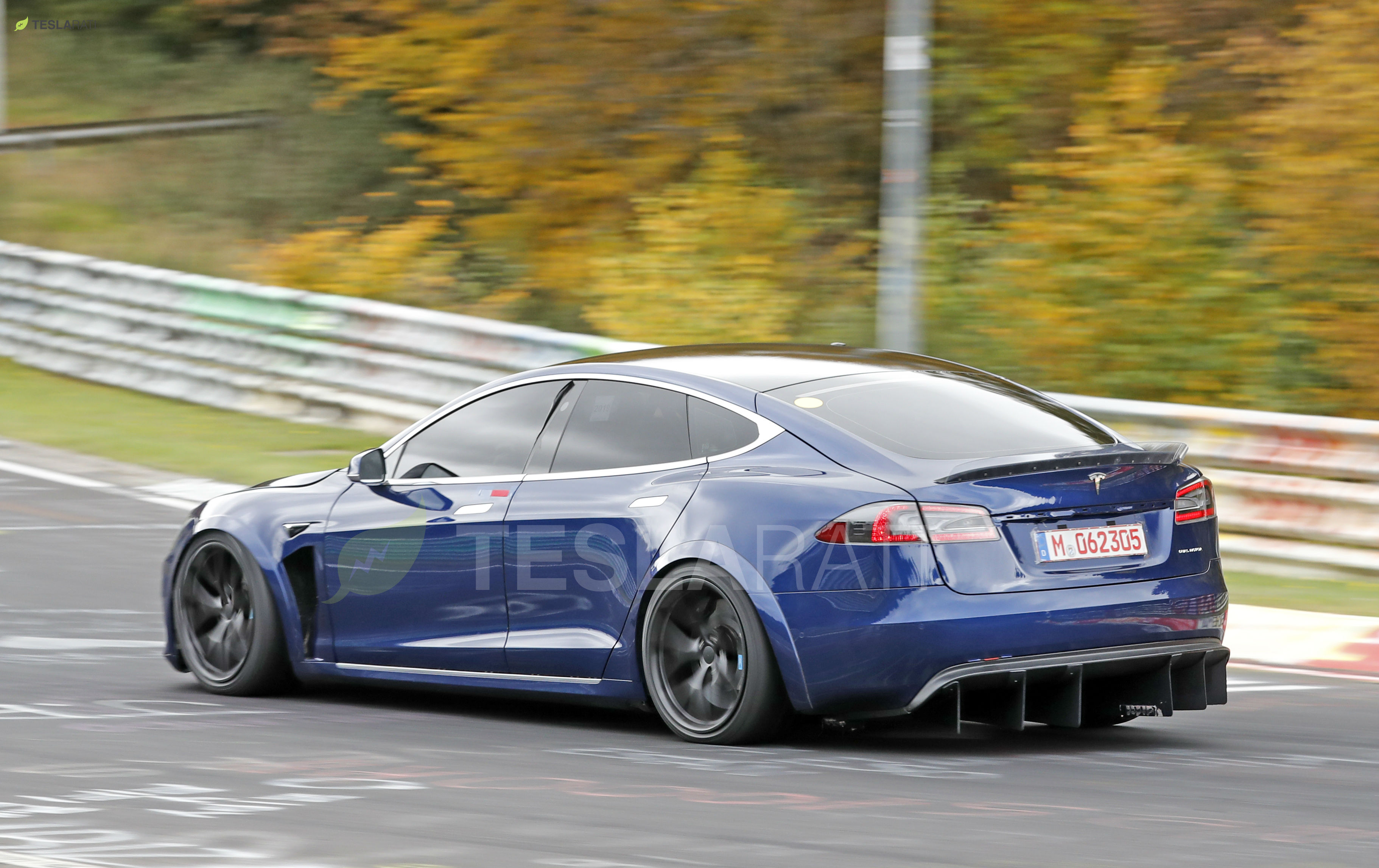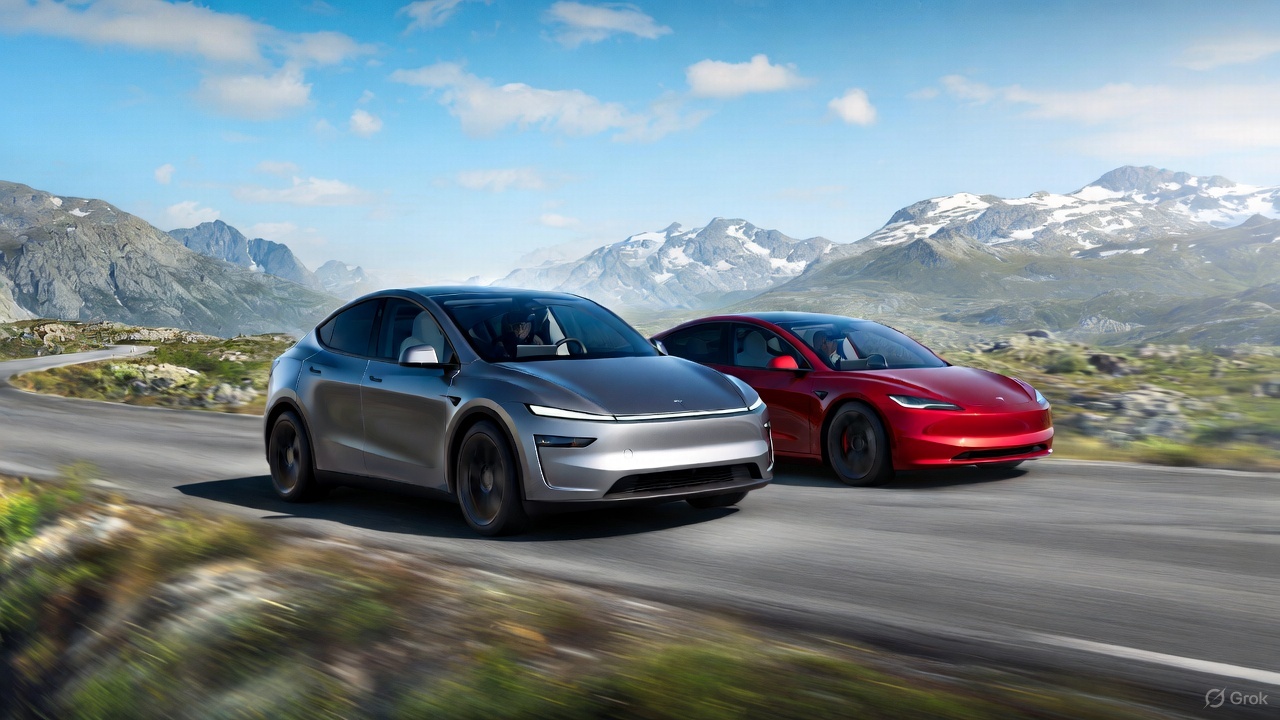

News
Tesla and Lucid’s performance specs are opening the door for an ICE exit
Tesla and Lucid Motors are paving the way for an internal combustion car exit in terms of performance vehicles. The two companies, with their impressive specifications, are showing that if a consumer wants a fast car, they should consider battery-powered machines first and foremost.
The Tesla Model S seemed to break the mindset of many EV skeptics who claimed that gas-powered vehicles would always reign superior on a drag strip. For a long time, critics of the electric movement thought that cars powered by battery cells would always be similar to golf cars: slow and boring.
However, the Model S quickly changed the tune of the skeptics, turning in quarter-mile times that snuck under the 11-second mark. Tesla has worked to continuously improve the power output of its vehicles with increased battery and motor efficiency, along with aerodynamic enhancements that came from Software Updates.
Then came along Lucid. The company has been hyping its first vehicle, the Air, for several years. Tesla fans were skeptical, as they should be, but Lucid has proven itself to be a real player in the EV market over the past few months. After showing that its 517-mile range was for real, the company revealed that it had invented a series of new advancements that would improve the performance of its vehicle. These developments were critical to the Air’s performance specifications, and the car became the fastest production car ever to complete a quarter-mile race with a 9.9-second time.
With Tesla still working on its Plaid Mode variant for the Model S, which set a course record at the Nürburgring last year, there is some cause for concern with ICE companies who claim their vehicles can dethrone the instant torque and lightning-quick acceleration from electric cars. Now, these automakers don’t only have to deal with Tesla’s rapidly improving powertrains, but Lucid has proven itself to be a bit of an issue as well.

It turns out that only two other production cars have ever achieved a quarter-mile with a 9.9x-second time from a standing start: The Porsche 918 Spyder at 9.716 seconds, and the Bugatti Veyron Super Sport at 9.9 seconds. The Porsche used some battery power to achieve this time, as it was a hybrid-electric vehicle. Other cars have achieved the time with a one-foot rollout, but the Air and Model S both achieved their times without this rollout.
The Performance of the Lucid Air has virtually opened a revolving door for ICE cars to line up into and rollout of. The Model S was the original benchmark, and Lucid’s team aimed to create a more efficient and aerodynamically superior vehicle than Tesla’s flagship sedan. As of now, they’ve succeeded.
However, Tesla has kept their developments of the Plaid Mode Model S under wraps, and there is no indication of whether it will one-up the Air when it hits the drag strip in the future. One thing, however, is for sure: The culmination of Tesla and Lucid’s development of their performance vehicles has effectively dug the grave of ICE cars in terms of quarter-mile performance. With exceptional range ratings, environmental advantages, and improving technology through software, gas-powered cars will soon find themselves buried by the electric automakers who are striving to create fast and sustainable vehicles for everyone to drive.

News
Tesla FSD earns high praise in South Korea’s real-world autonomous driving test
As per the Korea Expressway Corporation’s report, the FSD test was conducted on December 15, 2025, from 10 a.m. to 6 p.m.

Tesla’s Full Self-Driving (FSD) has received a bullish assessment from the Korea Expressway Corporation following a real-world autonomous highway driving test.
A report of the test, shared on Naver Cafe, showed high praise for the system’s safety, capabilities, smooth maneuvers, and confidence.
South Korean highway test
As per the Korea Expressway Corporation’s report, the FSD test was conducted on December 15, 2025, from 10 a.m. to 6 p.m. Four people were in the Tesla that was tested, including the head of the mobility department. All four FSD driving modes were tested, from “Sloth” to “Mad Max.”
To test FSD’s performance, the system was tasked to operate on highways such as Gyeongbu, Cheonan, and Cheonan-Nonsan, as well as city areas in Dongtan New Town, Sejong Special City, and Daejeon Metropolitan City, among others.
Since FSD is only available for the Tesla Model S and Model X that are imported to South Korea from the United States, the system was not tested in a Model 3 or Model Y, which comprise the majority of Teslas on the country’s roads today.
Highway test results
Results showed FSD performing well, both in inner-city roads and on highways. In inner city roads, the testers noted that FSD was capable of autonomous driving at a level that already exceeds that of general human drivers, except in very few areas, such as unprotected left turns and work zone intersections.
In highways, the testers described FSD’s performance as “excellent,” though the system still showed frequent cases of violations in local bus lanes and max speed limit rules. These, however, could hopefully be addressed by Tesla in a future FSD update without many issues. The testers also noted that in some parts of the test, FSD seemed to be driving autonomously in accordance with traffic flow rather than strict traffic rules.
테슬라 Fsd 고속도로 자율주행 테스트 결과 보고 by Simon Alvarez
News
Tesla claims nearly 20% market share as Norway sets new car sales record
Tesla captured roughly one in five new cars in Norway, highlighting its dominance in the world’s most EV-friendly market.

Norway shattered its all-time new car sales record in 2025, and Tesla emerged as the clear winner. A year-end rush ahead of higher EV taxes pushed registrations to nearly 180,000 vehicles, with electric cars accounting for 96% of sales.
Tesla captured roughly one in five new cars in Norway, highlighting its dominance in the world’s most EV-friendly market.
Norway’s EV rush
As noted in a CarUp report, Norway’s electric vehicle sales in 2025 surged, thanks in part to buyers rushing ahead of a post–new year VAT increase of roughly 50,000 kronor on many new electric cars. This ended up pulling demand forward and setting a national record with almost 180,000 registrations in 2025.
The result was unprecedented. From the vehicles that were sold in 2025, 96% of new cars sold were fully electric. And from this number, Tesla and its Model Y made their dominance felt. This was highlighted by Geir Inge Stokke, director of OFV, who noted that Tesla was able to achieve its stellar results despite its small vehicle lineup.
“Taking almost 20% market share during a year with record-high new car sales is remarkable in itself. When a brand also achieves such volumes with so few models, it says a lot about both demand and Tesla’s impact on the Norwegian market,” Stokke stated.
Tesla domination
Tesla led all brands in Norway with 34,285 registrations, which is equal to a 19.1% market share. These results place Tesla well ahead of Volkswagen and Volvo, which held a 13.3% and 7.8% market share in 2025, respectively.
On the model chart, Tesla’s strength was even clearer. The Tesla Model Y topped all vehicles with 27,621 registrations, accounting for 15.4% of the entire market. The Tesla Model 3 also ranked among the top five, accounting for 3.7% of Norway’s entire auto sales in 2025.
Other strong performers included Volkswagen’s ID.4 and ID.7, Toyota’s bZ4X, which commanded 4.9%, 3.9%, and 4.1% of Norway’s total sales in 2025, respectively.
News
Tesla China sees 2nd-best month ever by selling 97,171 vehicles wholesale in December
The results mark Tesla China’s second-highest monthly result on record, trailing only November 2022’s 100,291 units.

Tesla posted a sharp year-end rebound in China last month, with December’s wholesale figures climbing to their second-highest level to date.
The surge capped a late-year recovery for the electric vehicle maker, even as full-year wholesale figures still finished lower year over year. Still, the data highlights how Tesla China’s offerings still resonate with customers in the world’s most competitive electric vehicle market.
Tesla China’s December surge
Tesla China sold 97,171 vehicles wholesale in December, as per data from the China Passenger Car Association (CPCA). The results mark Tesla China’s second-highest monthly result on record, trailing only November 2022’s 100,291 units, based on data compiled by CNEVPost. The details of Tesla China’s December results, such as its domestic sales and exports, are yet to be released.
December’s wholesale results represent a 3.63% increase from the same month last year and a 12.08% jump from November’s 86,700 units. It also marked the second consecutive month of year-over-year growth, signaling renewed momentum in China.
Tesla’s late-year momentum is believed to be partly driven by Tesla pulling deliveries forward to allow buyers to take advantage of more favorable purchase tax policies before the calendar year ended. That strategy helped boost monthly performance even as competition in China’s EV market remained intense.
Tesla China’s FY 2025 volumes
Despite the strong December finish, Tesla China’s wholesale sales declined on an annual basis. The electric vehicle maker’s total wholesale figures for 2025 reached 851,732 units, down 7.08% year over year. This could have been due to a variety of factors, from intense competition in the domestic Chinese market to Giga Shanghai’s changeover to the new Model Y in the early part of the year.
Tesla Gigafactory Shanghai continues to play a central role in its global operations, producing the Model 3 sedan and Model Y crossover for both Chinese customers and export markets. The efficiency of Gigafactory Shanghai has allowed it to become Tesla’s largest factory by volume, as well as the company’s primary vehicle export hub.







